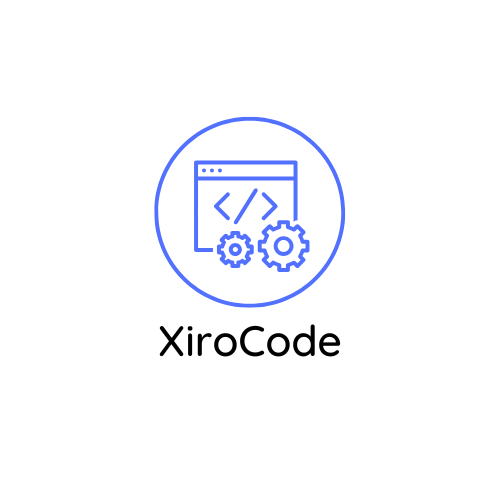In a world where everyone’s glued to their screens, app and software development isn’t just a skill; it’s a superpower. Developers are the unsung heroes crafting the digital experiences that keep us entertained, organized, and sometimes even sane. Ever wondered how that game you can’t stop playing or that app that reminds you to drink water came to be? Spoiler alert: it took a lot of caffeine and a sprinkle of genius.
Overview of App and Software Development
App and software development involves a systematic approach to creating digital solutions for various platforms. Developers follow a comprehensive process that includes planning, designing, coding, testing, and maintaining applications. Each phase plays a crucial role in delivering functional and user-friendly products.
Planning acts as the foundation of development. It involves gathering requirements, defining goals, and outlining the project scope. Understanding user needs shapes the development process and guides design decisions. Also, technology choices, such as programming languages and frameworks, emerge during this phase.
Designing follows planning and ensures an engaging user experience. User interface (UI) and user experience (UX) design elements combine to create visually appealing and intuitive applications. Wireframes and prototypes help visualize the final product and streamline user feedback.
Coding is where the real magic happens. Developers write code based on specifications and designs established earlier. Collaboration among team members fosters innovation and problem-solving, resulting in efficient coding practices. Programming languages like Java, Swift, or Python frequently come into play, depending on the application’s requirements.
Testing ensures that applications perform as intended. Quality assurance (QA) teams conduct various tests, including functional, performance, and security assessments. This critical phase identifies and resolves potential issues before the final product launch.
Maintenance is an ongoing responsibility. Post-launch support involves monitoring performance, updating software for security patches, and implementing new features based on user feedback. Continuous improvement enhances user satisfaction and keeps applications relevant in a rapidly evolving digital landscape.
The interplay between these phases highlights the intricate nature of app and software development, underscoring the importance of each step in delivering high-quality digital experiences.
Key Stages in Development

App and software development involves several crucial stages essential for creating effective digital products. Each phase contributes to building a seamless user experience while ensuring project goals are met.
Planning and Requirements Gathering
In this phase, developers collect requirements to define project objectives. Stakeholder interviews, surveys, and market research help identify user needs. Establishing a clear plan guides the subsequent steps in the development process, helping prevent scope creep. Accurate documentation also plays a vital role in ensuring everyone is aligned on expectations and deliverables.
Design and Prototyping
Design focuses on creating an engaging user interface and user experience. Developers often utilize wireframes and mockups to visualize the application’s layout. Prototyping enables testing of concepts before full-scale development begins. Gathering user feedback at this stage allows adjustments that enhance usability. A strong design foundation leads to a more intuitive and pleasing application.
Development and Coding
During this stage, developers translate designs into functional applications with various programming languages. Collaborating in teams fosters creativity and efficiency while adhering to coding standards. Implementing consistent code structures improves maintainability. Continuous integration practices help streamline development and allow for quicker identification of issues. Proper version control systems also ensure organized management of changes.
Testing and Quality Assurance
Testing involves evaluating application functionality against requirements. Quality assurance teams employ automated and manual testing methods to identify bugs and performance issues. Conducting usability tests ensures applications meet user expectations. Resolving issues early in the process saves time and resources before launching. Prioritizing quality fosters a positive user experience and enhances app reliability.
Deployment and Maintenance
Deployment marks the transition from development to live status. Developers release applications on relevant platforms following thorough testing. After launch, ongoing maintenance involves updating software to fix bugs, improve performance, and add features. Monitoring user feedback and analytics helps inform future updates, ensuring applications remain relevant and competitive. Staying proactive in maintenance preserves user satisfaction over time.
Popular Programming Languages and Frameworks

Numerous programming languages and frameworks play crucial roles in the app and software development process. These tools streamline development, enhance functionality, and boost user experience.
Front-End Development Tools
JavaScript stands out as a vital language for front-end development. It enables interactive features and dynamic content, enhancing user engagement. React.js offers a powerful library for building user interfaces, allowing developers to create reusable UI components. Additionally, Angular provides a robust front-end framework known for its scalability and performance. Using CSS and HTML alongside these tools ensures appealing visual designs. Bootstrap facilitates responsive design, making applications accessible on various devices. Developers choose these tools according to the specific needs of a project, enabling them to deliver rich, interactive digital experiences effectively.
Back-End Development Tools
Node.js serves as a popular platform for building scalable server-side applications. Its asynchronous, event-driven architecture improves performance significantly. Python, favored for its readability, supports back-end development through frameworks like Django and Flask, which simplify the development of web applications. Ruby on Rails remains another preferred choice due to its convention-over-configuration approach, allowing rapid application development. PHP powers many web applications, benefiting from frameworks like Laravel that streamline coding processes. These tools enable developers to create efficient, reliable back-end systems that ensure smooth interactions between users and applications.
Trends in App and Software Development

App and software development is evolving rapidly, driven by innovations that redefine user experiences. Awareness of these trends helps developers stay competitive and meet market demands.
Mobile Development Trends
Mobile applications continue to dominate the digital landscape. An estimated 80% of internet users access online services through mobile devices. Development prioritizes responsive design, ensuring applications perform seamlessly across various screen sizes. Incorporating progressive web applications enhances functionality, merging web and mobile capabilities. Additionally, the adoption of 5G technology enhances connectivity, allowing developers to create richer, more interactive mobile experiences.
Cloud Computing Influence
Cloud computing significantly influences app and software development. It facilitates scalable solutions, enabling developers to deploy applications efficiently. Around 94% of enterprises utilize cloud services, proving its effectiveness in reducing infrastructure costs. Moreover, cloud environments support real-time collaboration, streamlining the development process. By leveraging cloud-native architectures, developers enhance application performance and security, ensuring robust solutions.
Artificial Intelligence in Development
Artificial intelligence transforms app and software development processes. It automates repetitive tasks, freeing developers to focus on creativity. Approximately 65% of organizations integrate AI in their software solutions, optimizing decision-making and enhancing user engagement. Machine learning algorithms analyze user data, informing personalized experiences in applications. By embedding AI-driven features, applications adapt to user preferences, significantly improving satisfaction.
Challenges in App and Software Development
App and software development faces several challenges that can impact project success. These challenges require careful navigation to ensure quality digital products.
Resource Management
Resource management stands as a critical challenge in app and software development. Teams often juggle multiple responsibilities, making it essential to allocate time and effort effectively. For instance, insufficient resources might delay project timelines, causing missed deadlines. Effective communication among team members optimizes resource use, promoting collaboration. Prioritizing tasks ensures that the most crucial components receive attention, which helps mitigate risks associated with tight scheduling. Deploying project management tools can streamline workflows and enhance visibility into resource allocation, ultimately leading to improved outcomes.
Keeping Up with Technology Changes
Keeping up with technology changes represents another significant challenge. Developers confront the rapid evolution of programming languages, frameworks, and tools, which can lead to skill gaps in the workforce. Continuous learning becomes vital, as professionals must stay updated on new developments and industry trends. Organizations that invest in training and development foster a culture of adaptability, enabling teams to embrace innovation. Failing to adapt may result in outdated applications that do not meet user expectations. Monitoring market trends serves as a strategy for identifying technological advancements, ensuring successful product development in a competitive landscape.
Conclusion
App and software development stands at the forefront of the digital revolution shaping how users interact with technology. The intricate process involves careful planning design coding testing and maintenance to create seamless experiences. Developers play a vital role in this journey transforming ideas into functional applications that meet user needs.
As the landscape continues to evolve staying abreast of trends like mobile-first design cloud computing and artificial intelligence is crucial. Embracing these innovations not only enhances user engagement but also ensures that applications remain competitive and relevant. By prioritizing effective resource management and continuous learning developers can navigate challenges and drive successful outcomes in their projects.

